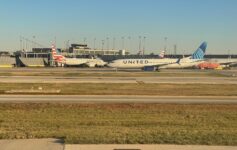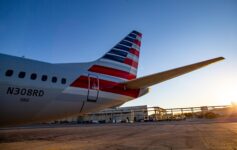
A new study in France reveals that flight attendants and pilots have been exposed to increasing levels of radiation over the last five years. In fact, the study claims only nuclear fuel workers face more radiation exposure than flight crews.
Airline Crews And Nuclear Fuel Workers Share A Common Radiation Problem
High levels of radiation can damage cells and damaged cells can lead to cancer. That makes radiation exposure from cosmic rays a concern among airline personnel who work in the air, often above 30,000 feet and therefore more exposed to these rays than people on the ground.
A recently-competed five year study by the Institut de Radioprotection et de Surete Nucleaire (IRSN) notes an alarming increase in the number of crew members receiving annual exposure above recommended thresholds. While the overall number remains low, the number of crew members exposed doubled between 2016 and 2019. Furthermore, the overall radiation exposure amongst pilots and flight attendants rose 38% between 2015 and 2019. These instances of exposure are roughly split between pilots and flight attendants.
Per Bloomberg, exposure above ground is much more potent:
According to the IRSN, exposure to these cosmic rays is about 150 times more potent at 10 kilometers (6.2 miles) above ground than at sea level, and is two or three times higher at the poles than the equator.
In order to mitigate risk, the study recommend pilots and flight attendants be rotated out of higher-risk routes, which are typically polar routes used to connect North America with Asia.
Meanwhile, a union representing French pilots responded to the study by calling for better technology to detect solar flares, which would alert pilots to change altitude or recalibrate routing.
CONCLUSION
The study does not warn of immediate peril, though the rise in exposure over the last five years merits closer watch. The IRSN recommendation to rotate crewmemembers from higher risk routes does not take into account the seniority system as the basis of schedule assignments at most airlines.
While flight attendants and pilots may consider potential radiation exposure when bidding for a route, introducing obligatory rotating would likely require new collective bargaining agreements.




Why is the lead image an… astronaut?
This is a stock image of a nuclear plant worker!
LOL
Composite frames. They’re not metal anymore.